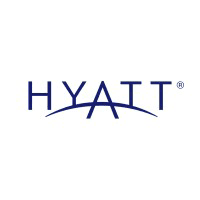
Marriott Hotel
How much does Marriott Hotel cost?
Initial Investment Range
$93,910,590 to $257,659,490
Franchise Fee
$418,000 to $530,500
The franchisee will establish and operate a full-service hotel under the name "Marriott Hotel."
Enjoy our partial free risk analysis below
Unlock the full risk analysis to access 9 more categories covering 100+ risks.
Marriott Hotel March 31, 2025 FDD Risk Analysis
Free FDD Library AI Analysis Date: July 16, 2025
DISCLAIMER: Not Legal Advice - For Informational Purposes Only. Consult With Qualified Franchise Professionals.
Franchisor Stability Risks
Start HereDisclosure of Franchisor's Financial Instability
Low Risk
Explanation
This risk was not identified. The audited financial statements for the franchisor, MIF, L.L.C. (MIF), in Exhibit J appear very strong, showing substantial net worth ($466 million) and significant profitability ($63.8 million net income in 2024). The auditor's report is unqualified and contains no 'going concern' warnings. These financials suggest MIF has ample resources to support the franchise system and meet its obligations, which is a positive factor for prospective franchisees.
Potential Mitigations
- Your accountant should review the franchisor's complete audited financial statements, including all footnotes, for a comprehensive understanding of their financial position.
- Ask your business advisor to assess the franchisor’s financial trends over the three years provided to ensure consistent stability and profitability.
- It is wise for your attorney to confirm that the financial statements provided are for the correct franchising entity and meet all federal and state disclosure requirements.
High Franchisee Turnover
Low Risk
Explanation
This risk was not identified. The franchisee turnover rates, as detailed in Item 20 Tables, appear to be low. For example, in 2024, there were a total of six reported franchise exits (terminations, non-renewals, ceased operations) from a base of 245 franchised units. This represents a churn rate of approximately 2.4%, which is not indicative of widespread franchisee distress or dissatisfaction within the system. Low turnover is generally a positive indicator of system health.
Potential Mitigations
- It is still beneficial to contact a diverse group of current and former franchisees listed in Item 20 to discuss their experiences with the system and its profitability.
- Your business advisor can help you analyze the Item 20 tables to calculate turnover rates and compare them against available industry benchmarks.
- Always ask your attorney to review the footnotes in Item 20 for any unusual definitions or explanations regarding franchisee departures.
Rapid System Growth
Low Risk
Explanation
This risk was not identified. The data in Item 20 shows that the Marriott system is mature and exhibiting stable, not rapid, growth. The number of total franchised outlets increased by only two units from the start of 2022 to the end of 2024 (from 243 to 245). This slow growth rate suggests the franchisor's support infrastructure is unlikely to be strained by an influx of new franchisees, which is a positive indicator for support quality.
Potential Mitigations
- You should still discuss the franchisor's future growth plans and how they intend to scale support services with your business advisor.
- In your discussions with current franchisees, it would be prudent to ask about the quality and responsiveness of the support they currently receive.
- An accountant's review of the franchisor's financials can help confirm they have the resources to maintain support levels even with moderate growth.
New/Unproven Franchise System
Low Risk
Explanation
This risk was not identified. MIF, L.L.C.'s (MIF) parent company, Marriott International, Inc. (MII), is one of the world's most established hospitality companies, with operations dating back to 1957 and franchising since 1968. The FDD provides extensive information on its long history, experienced management team, large number of existing outlets, and strong financial position. This is a mature and well-proven system, which significantly reduces the risks associated with a new or unproven franchise concept.
Potential Mitigations
- A business advisor can help you review the extensive history and brand portfolio of MII to fully appreciate its market position.
- It is beneficial to discuss with your attorney how the relationship between MIF (the franchisor) and MII (the parent) impacts your franchise agreement.
- Your accountant can confirm the financial strength of the specific franchising entity, MIF, as detailed in the provided financial statements.
Possible Fad Business
Low Risk
Explanation
This risk was not identified. The franchise is for the Marriott and JW Marriott brands, which are globally recognized, long-standing leaders in the full-service hotel industry. The business model is based on enduring consumer demand for lodging and hospitality services, not on a short-term trend or fad. The franchisor's extensive history and large, stable system provide strong evidence of a sustainable and adaptable business model, minimizing the risk of the concept becoming obsolete.
Potential Mitigations
- A business advisor can help you analyze the long-term trends in the hospitality industry to confirm the brand's continued relevance.
- It is prudent to review the franchisor's history of brand evolution and adaptation with your attorney to understand their commitment to staying current.
- Discussing the brand's resilience during various economic cycles with long-tenured franchisees can provide valuable insight.
Inexperienced Management
Low Risk
Explanation
This risk was not identified. The executive team detailed in Item 2 possesses extensive and long-term experience within Marriott International, Inc. (MII) and other major corporations. Many executives have held various senior roles within the company for decades. This depth of experience in both the hospitality industry and in managing a large-scale franchise system is a significant positive factor, suggesting a stable and knowledgeable leadership team is in place to support franchisees.
Potential Mitigations
- Reviewing the detailed biographies of the key executives in Item 2 with your business advisor can provide confidence in the leadership team's capabilities.
- When speaking with current franchisees, it is a good practice to inquire about their direct experiences and the quality of support from the management team.
- Your attorney can help you understand the roles of the individuals listed in Item 2 and their relevance to your potential franchise operation.
Private Equity Ownership
Low Risk
Explanation
This risk was not identified. FDD Item 1 clearly states that the franchisor, MIF, L.L.C. (MIF), is a subsidiary of Marriott International, Inc. (MII), which is a publicly-traded corporation, not a private equity firm. The ownership structure is transparent, and the associated risks of short-term profit motives often linked to private equity ownership are not present here. The focus appears to be on long-term brand management and system health.
Potential Mitigations
- It is good practice to have your business advisor research the recent performance and strategic direction of the parent company, MII, as a publicly-traded entity.
- Your attorney can confirm the corporate structure and the relationship between the parent and the franchising entity.
- An accountant can analyze the financial statements to ensure there are no signs of unusual financial structures often associated with private equity.
Non-Disclosure of Parent Company
Low Risk
Explanation
This risk was not identified. The FDD clearly discloses in Item 1 that the franchisor, MIF, L.L.C. (MIF), is a subsidiary of Marriott International, Inc. (MII). Furthermore, the audited financial statements for MIF in Exhibit J show it to be an exceptionally well-capitalized entity in its own right, not a shell company dependent on an undisclosed parent. Therefore, the risk of a weak or undisclosed parent company creating hidden instability is not present.
Potential Mitigations
- Your attorney should review the relationship between the franchisor and its parent company as disclosed in Item 1.
- An accountant can confirm that the provided financial statements in Item 21 are for the correct franchising entity.
- It remains prudent to ask your business advisor to assess the overall health and public reputation of the parent company, MII.
Predecessor History Issues
Low Risk
Explanation
This risk was not identified. The FDD does not list any predecessors for the current franchising entity, MIF, L.L.C. (MIF), which was formed in 2012. The document is transparent about the long history of the parent, Marriott International, Inc., and discloses litigation related to acquired systems like Starwood in Item 3. There is no indication that a problematic history of a predecessor entity is being hidden or downplayed, providing a clear view of the system's lineage.
Potential Mitigations
- It is a good practice for your attorney to review Item 1 for any mention of predecessors and their operating history.
- When speaking with long-term franchisees, asking about their experience through any system ownership changes can provide valuable context.
- A business advisor can help you research the history of the parent company and any major systems it has acquired.
Pattern of Litigation
High Risk
Explanation
Item 3 discloses extensive and significant litigation. This includes a massive multi-district litigation related to a major data breach, numerous class actions, and investigations by 50 state attorneys general and multiple foreign regulators. It also discloses actions regarding resort fee practices and a recent $16 million negligence verdict against the parent company and a franchisee. This pattern of litigation suggests significant operational, regulatory, and financial risks for the system and could impact brand reputation.
Potential Mitigations
- A thorough review of all litigation disclosed in Item 3 with your franchise attorney is essential to understand the potential liabilities and brand risks.
- Discussing the data security measures and insurance requirements with your attorney and insurance broker is crucial in light of the disclosed data breach litigation.
- Your accountant should help you assess the potential financial impact that negative brand perception from such litigation could have on your hotel.
Disclosure & Representation Risks
Example Risk: Franchisee Financial Obligations
Blue Risk
Explanation
This risk involves the financial obligations that a franchisee must meet, including initial fees, ongoing royalties, and other required payments. Understanding these obligations is crucial for long-term success.
Potential Mitigations
- Carefully review the Franchise Disclosure Document (FDD) and consult with a franchise attorney to fully understand all financial commitments before signing.
- Conduct regular risk assessments
- Implement monitoring and reporting systems
Unlock Full Risk Analysis
Purchase the complete risk review to see all 102 risks across all 10 categories.
Financial & Fee Risks
Example Risk: Franchisee Financial Obligations
Blue Risk
Explanation
This risk involves the financial obligations that a franchisee must meet, including initial fees, ongoing royalties, and other required payments. Understanding these obligations is crucial for long-term success.
Potential Mitigations
- Carefully review the Franchise Disclosure Document (FDD) and consult with a franchise attorney to fully understand all financial commitments before signing.
- Conduct regular risk assessments
- Implement monitoring and reporting systems
Unlock Full Risk Analysis
Purchase the complete risk review to see all 102 risks across all 10 categories.
Legal & Contract Risks
Example Risk: Franchisee Financial Obligations
Blue Risk
Explanation
This risk involves the financial obligations that a franchisee must meet, including initial fees, ongoing royalties, and other required payments. Understanding these obligations is crucial for long-term success.
Potential Mitigations
- Carefully review the Franchise Disclosure Document (FDD) and consult with a franchise attorney to fully understand all financial commitments before signing.
- Conduct regular risk assessments
- Implement monitoring and reporting systems
Unlock Full Risk Analysis
Purchase the complete risk review to see all 102 risks across all 10 categories.
Territory & Competition Risks
Example Risk: Franchisee Financial Obligations
Blue Risk
Explanation
This risk involves the financial obligations that a franchisee must meet, including initial fees, ongoing royalties, and other required payments. Understanding these obligations is crucial for long-term success.
Potential Mitigations
- Carefully review the Franchise Disclosure Document (FDD) and consult with a franchise attorney to fully understand all financial commitments before signing.
- Conduct regular risk assessments
- Implement monitoring and reporting systems
Unlock Full Risk Analysis
Purchase the complete risk review to see all 102 risks across all 10 categories.
Regulatory & Compliance Risks
Example Risk: Franchisee Financial Obligations
Blue Risk
Explanation
This risk involves the financial obligations that a franchisee must meet, including initial fees, ongoing royalties, and other required payments. Understanding these obligations is crucial for long-term success.
Potential Mitigations
- Carefully review the Franchise Disclosure Document (FDD) and consult with a franchise attorney to fully understand all financial commitments before signing.
- Conduct regular risk assessments
- Implement monitoring and reporting systems
Unlock Full Risk Analysis
Purchase the complete risk review to see all 102 risks across all 10 categories.
Franchisor Support Risks
Example Risk: Franchisee Financial Obligations
Blue Risk
Explanation
This risk involves the financial obligations that a franchisee must meet, including initial fees, ongoing royalties, and other required payments. Understanding these obligations is crucial for long-term success.
Potential Mitigations
- Carefully review the Franchise Disclosure Document (FDD) and consult with a franchise attorney to fully understand all financial commitments before signing.
- Conduct regular risk assessments
- Implement monitoring and reporting systems
Unlock Full Risk Analysis
Purchase the complete risk review to see all 102 risks across all 10 categories.
Operational Control Risks
Example Risk: Franchisee Financial Obligations
Blue Risk
Explanation
This risk involves the financial obligations that a franchisee must meet, including initial fees, ongoing royalties, and other required payments. Understanding these obligations is crucial for long-term success.
Potential Mitigations
- Carefully review the Franchise Disclosure Document (FDD) and consult with a franchise attorney to fully understand all financial commitments before signing.
- Conduct regular risk assessments
- Implement monitoring and reporting systems
Unlock Full Risk Analysis
Purchase the complete risk review to see all 102 risks across all 10 categories.
Term & Exit Risks
Example Risk: Franchisee Financial Obligations
Blue Risk
Explanation
This risk involves the financial obligations that a franchisee must meet, including initial fees, ongoing royalties, and other required payments. Understanding these obligations is crucial for long-term success.
Potential Mitigations
- Carefully review the Franchise Disclosure Document (FDD) and consult with a franchise attorney to fully understand all financial commitments before signing.
- Conduct regular risk assessments
- Implement monitoring and reporting systems
Unlock Full Risk Analysis
Purchase the complete risk review to see all 102 risks across all 10 categories.
Miscellaneous Risks
Example Risk: Franchisee Financial Obligations
Blue Risk
Explanation
This risk involves the financial obligations that a franchisee must meet, including initial fees, ongoing royalties, and other required payments. Understanding these obligations is crucial for long-term success.
Potential Mitigations
- Carefully review the Franchise Disclosure Document (FDD) and consult with a franchise attorney to fully understand all financial commitments before signing.
- Conduct regular risk assessments
- Implement monitoring and reporting systems
Unlock Full Risk Analysis
Purchase the complete risk review to see all 102 risks across all 10 categories.










